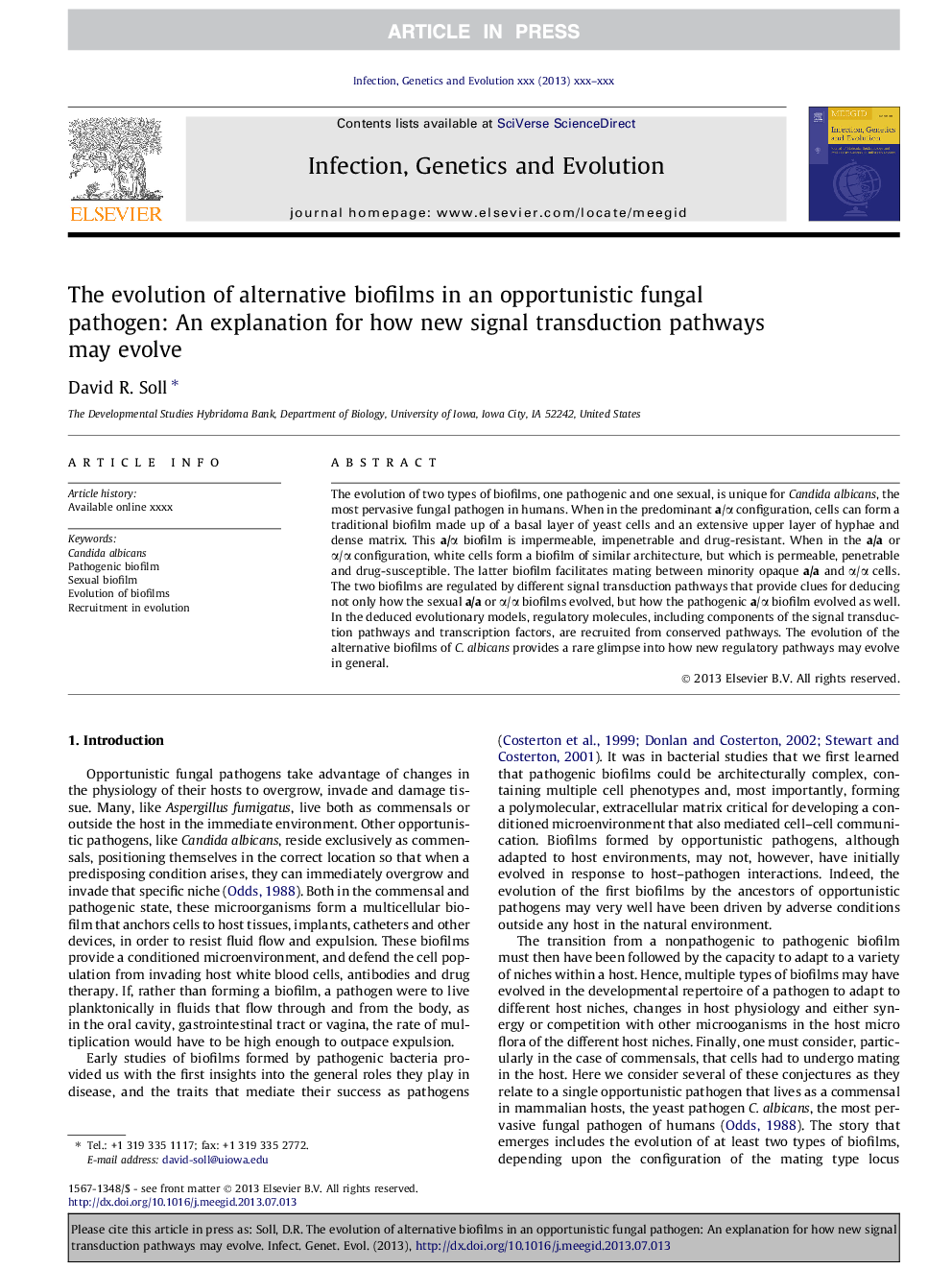| Article ID | Journal | Published Year | Pages | File Type |
|---|---|---|---|---|
| 5910139 | Infection, Genetics and Evolution | 2014 | 9 Pages |
Abstract
The evolution of two types of biofilms, one pathogenic and one sexual, is unique for Candida albicans, the most pervasive fungal pathogen in humans. When in the predominant a/α configuration, cells can form a traditional biofilm made up of a basal layer of yeast cells and an extensive upper layer of hyphae and dense matrix. This a/α biofilm is impermeable, impenetrable and drug-resistant. When in the a/a or α/α configuration, white cells form a biofilm of similar architecture, but which is permeable, penetrable and drug-susceptible. The latter biofilm facilitates mating between minority opaque a/a and α/α cells. The two biofilms are regulated by different signal transduction pathways that provide clues for deducing not only how the sexual a/a or α/α biofilms evolved, but how the pathogenic a/α biofilm evolved as well. In the deduced evolutionary models, regulatory molecules, including components of the signal transduction pathways and transcription factors, are recruited from conserved pathways. The evolution of the alternative biofilms of C. albicans provides a rare glimpse into how new regulatory pathways may evolve in general.
Keywords
Related Topics
Life Sciences
Agricultural and Biological Sciences
Ecology, Evolution, Behavior and Systematics
Authors
David R. Soll,
